Finding Puerto del Rosario Sculptures
Every time I walk around the little port city of Puerto del Rosario – the city of sculptures – I discover something new. Yesterday, I walked to the end of my street Calle León y Castillo, which took me straight down to the commercial port. The day was warm and it was a public holiday so the city was empty, everyone sleeping off the Carnaval celebrations of the night before.
I’ve been passing this iconic roundabout sculpture for weeks now. It’s called the ‘three bums roundabout’ in English, and the same in Spanish, more or less, although they say ‘the three female bums’. – Rotonda de las Culonas, a symbol of unity.
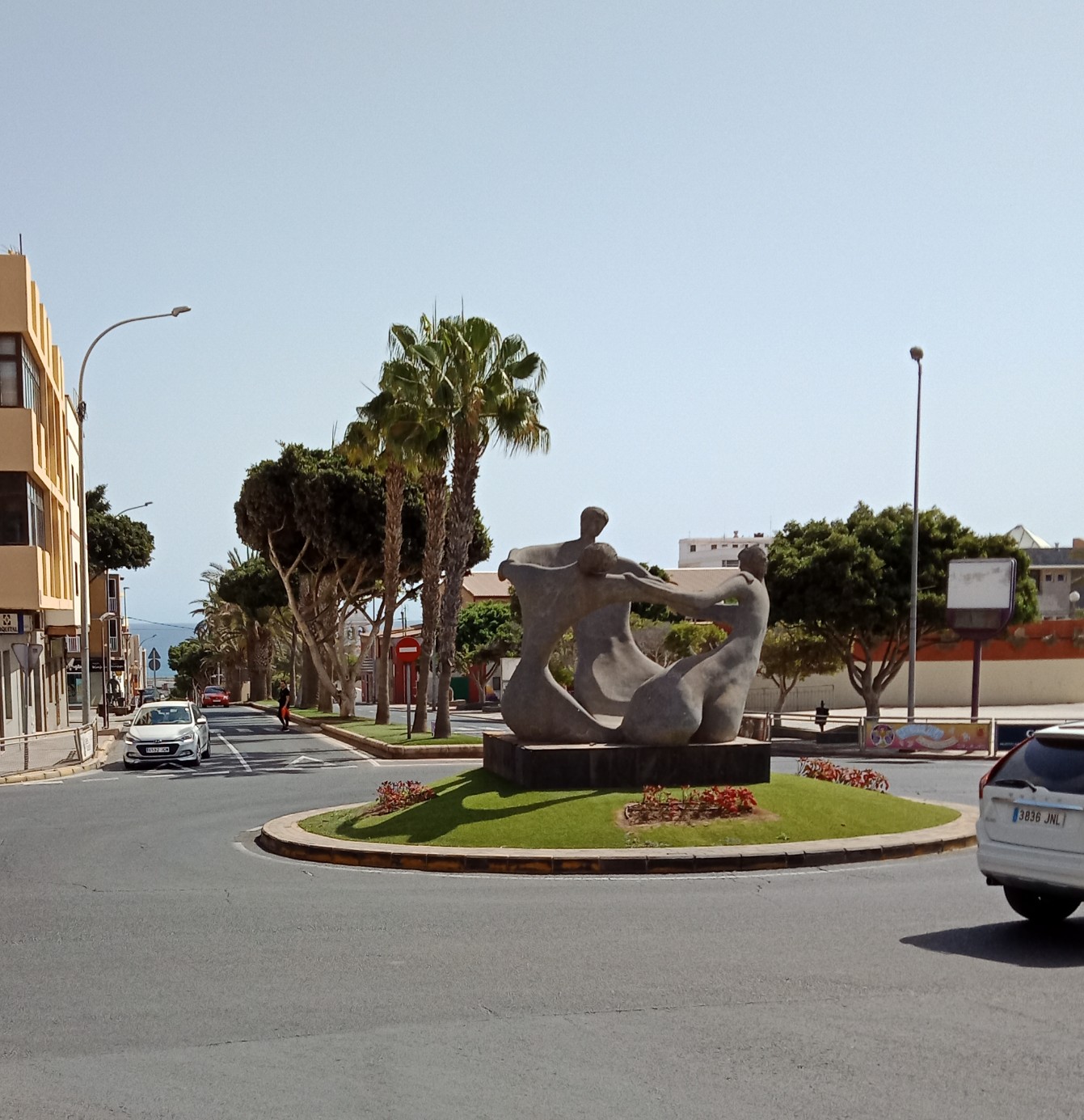
Heading down past Plaza del la Paz, which is set up for open air events with an elevated stage backing onto the street, I reached the city centre. I love the grand old buildings, even though I know they represent Spanish colonialism, and I have no idea when the building below was built. The history of Fuerteventura since Spanish conquest and occupation of the island back in the early 1400s has been one of a blending of cultures, new Spanish landowners fathering children with majorero women. But the climate here is so dry and farming hard that many Spanish overlords preferred to live elsewhere and the population remained low. To give an idea, Puerto del Rosario is only three kilometres by five at its widest points.
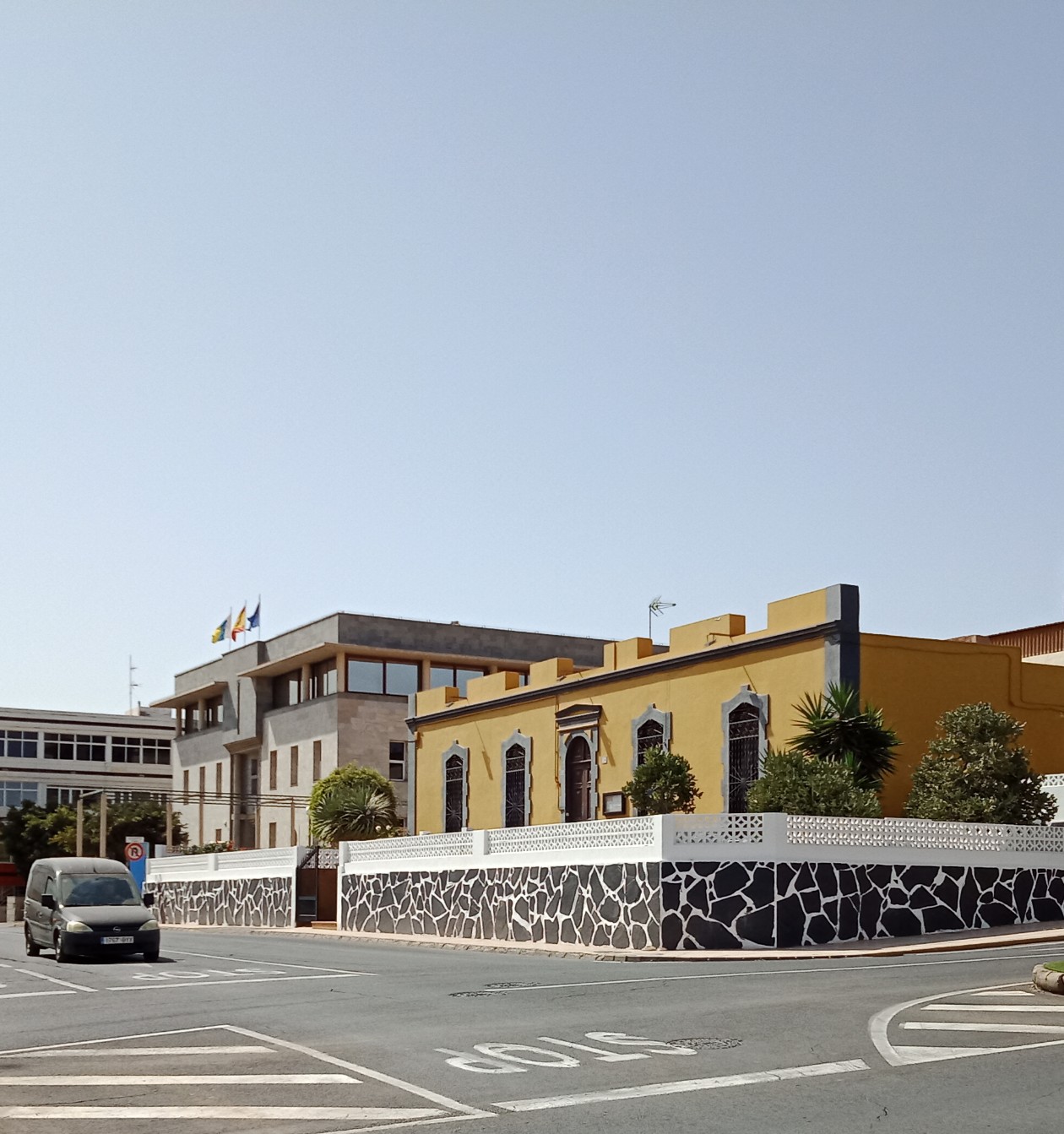
I was on the hunt of sculpture, because through it, the majoreros are telling the world some of their story. On my side of the street I encountered this chap, El Aguador or water carrier. This was how fresh water was carried to the doors of houses in Puerto del Rosario right up until the 1960s. These containers carried about 15 litres each.
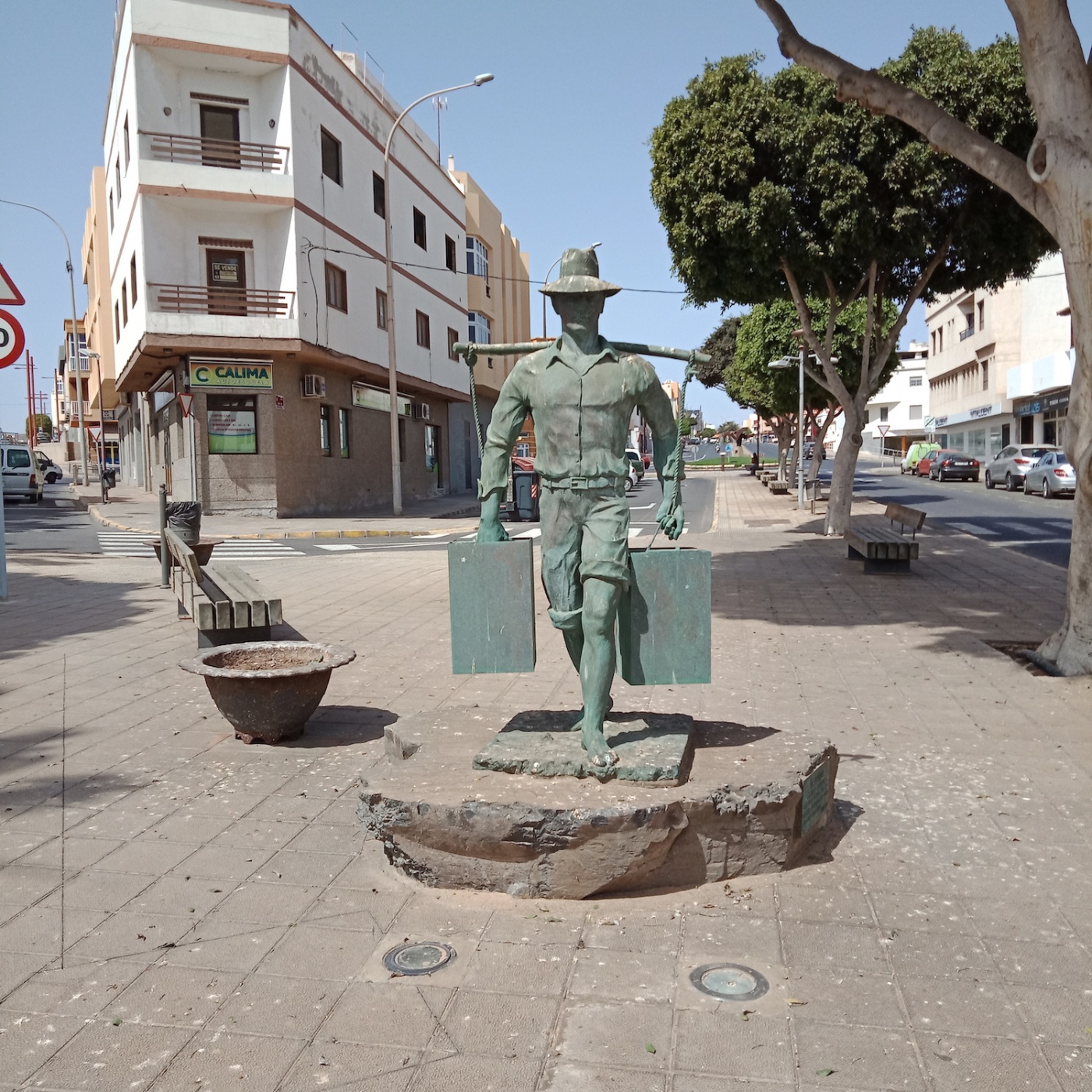
A Detour into the Past of Canary Islands Travel Writer Olivia Stone
My sculpture hunt was sidetracked when I passed by this building. Back in the 1880s, British travel writer Olivia Stone came on a tour of the Canary Islands with her husband. Her travel diary Tenerife and Its Six Satellites is well worth a read. The two volumes paint a vivid picture of the islands and serve as a vital historical document. When researching Clarissa’s Warning, which includes some of Olivia Stone’s mysterious story including her disappearance from public life, I discovered she had stayed in this building, then a hotel and now, sadly, a ruin. This building is in a prime location at the end of Calle León y Castillo. Something grand should be done here! But then again, would Fuerteventura want to spotlight a British couple who single-handedly stimulated the first tourist boom the Canary Islands experienced? Although it was not a boom that reached Fuerteventura. That said, Olivia Stone played an enormous role in documenting the traditional ways of the islands as she found them then, and somewhere, I feel some honour is due her.
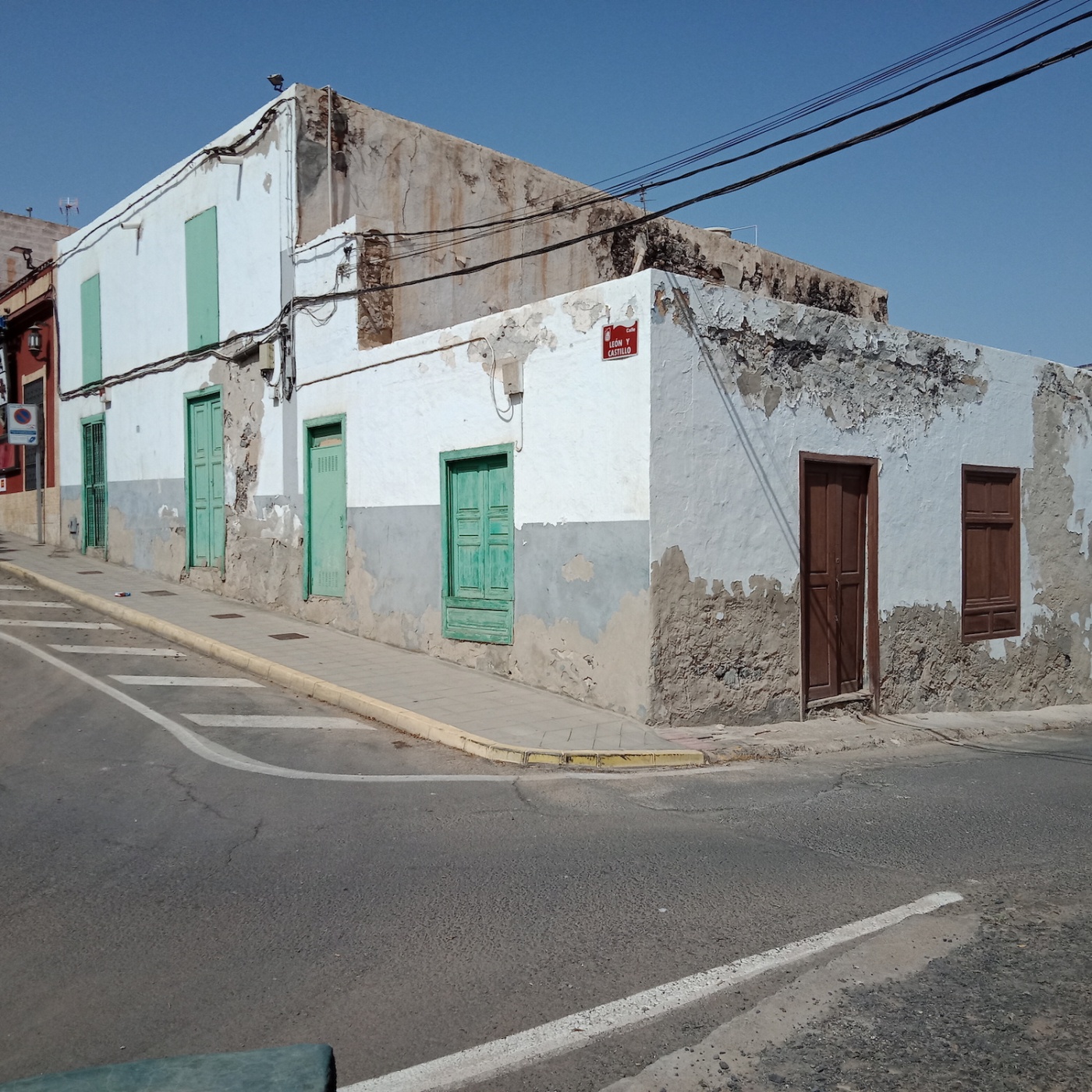

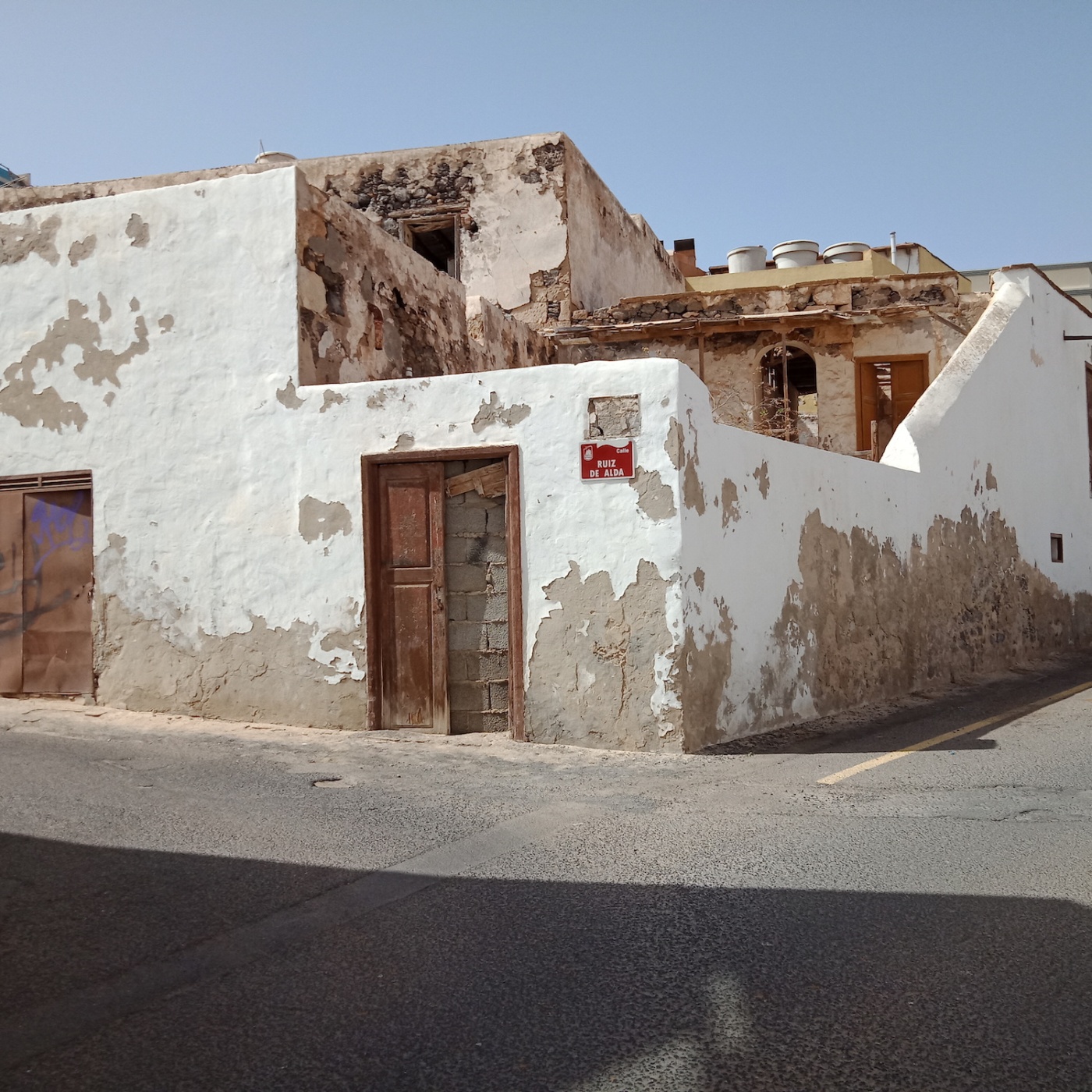
I carried on, having reached the end of my street. The old and the new blend a little uneasily in this city, as is made clear a few paces on at the corner of Calle Ruperto González.
R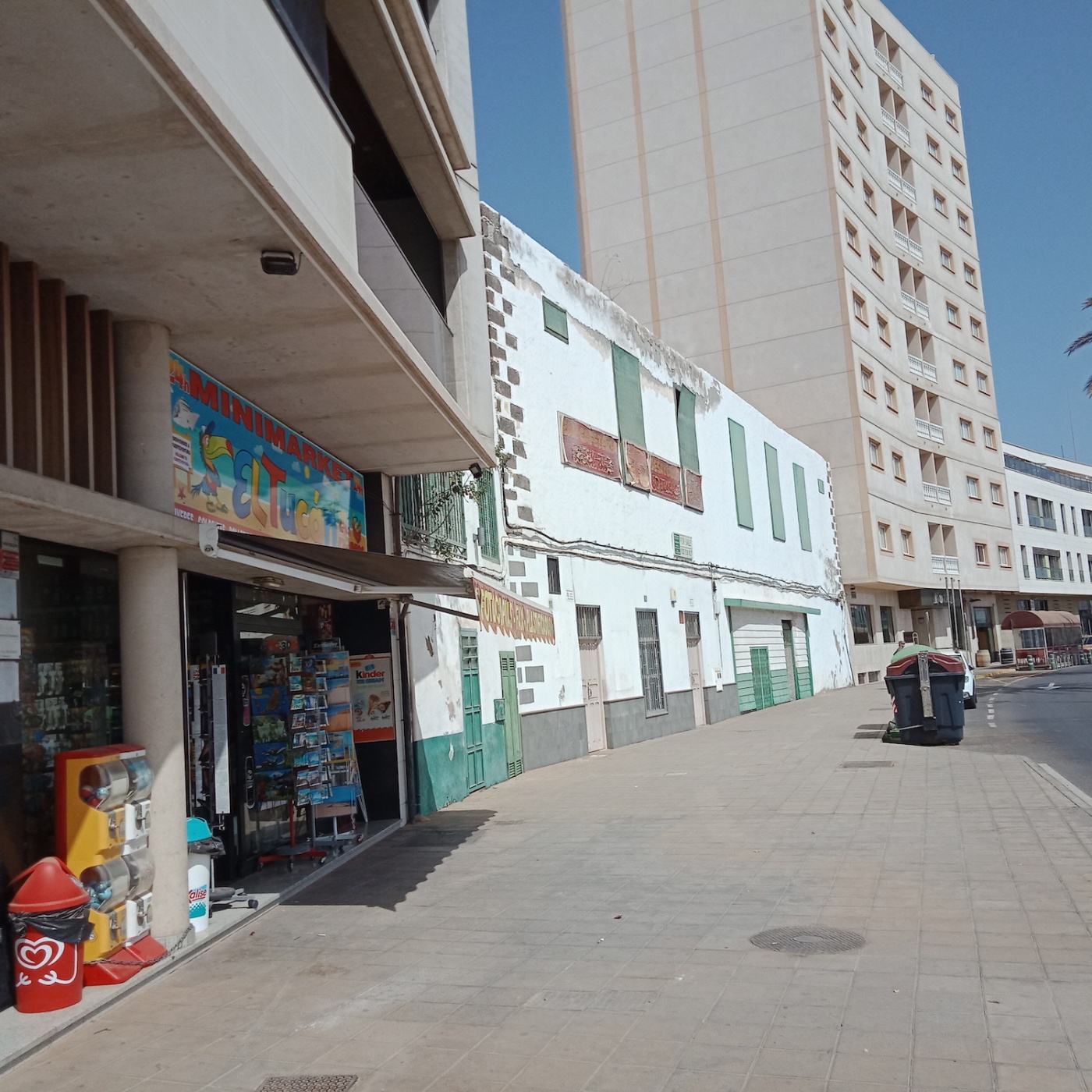
Back to the Sculptures of Puerto del Rosario
On this corner is another roundabout sculpture, Fuente de la Explanada, expressing the traditional values of the island.
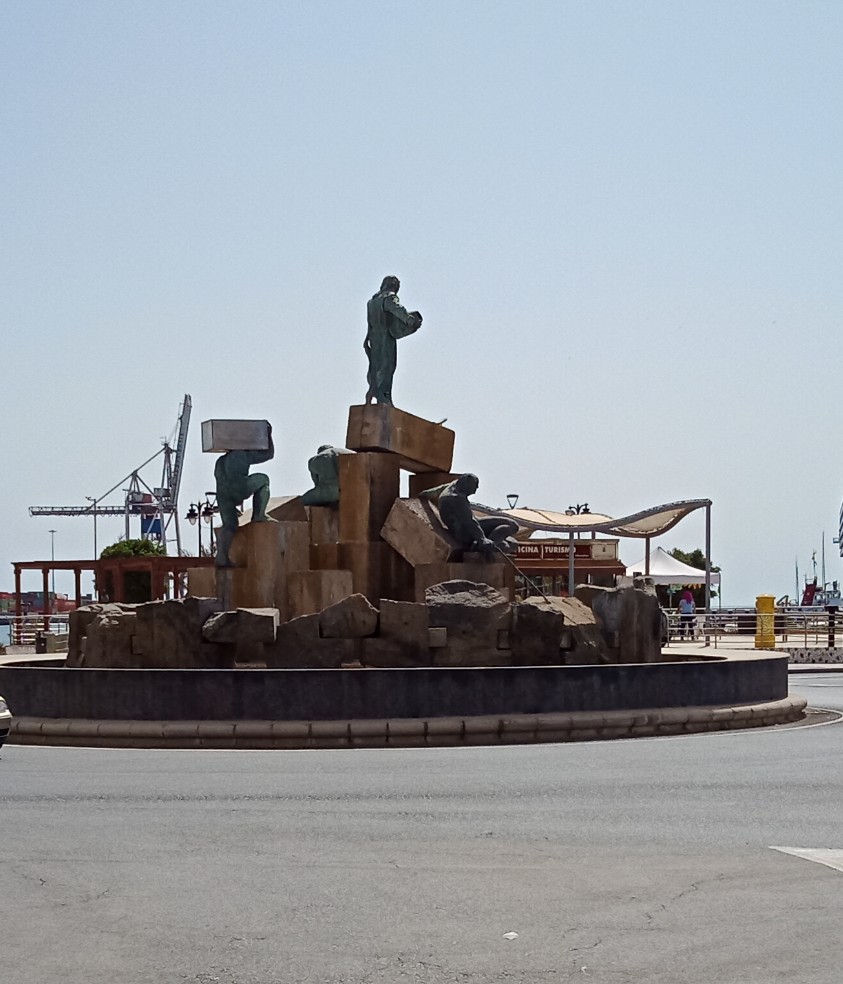
The promenade along the port contains a long row of sculptures. There’s this guy…

…and this giant shell.

And then, crossing back, I found this, a tribute to round-trip migration. The majoreros have migrated to other lands over the many centuries largely due to drought and famine, and now Fuerteventura is a multicultural island, receiving Brits, Germans, Italians, French, Russians, Latvians, Polish, Moroccans, Venezuelans and potentially one Australian…
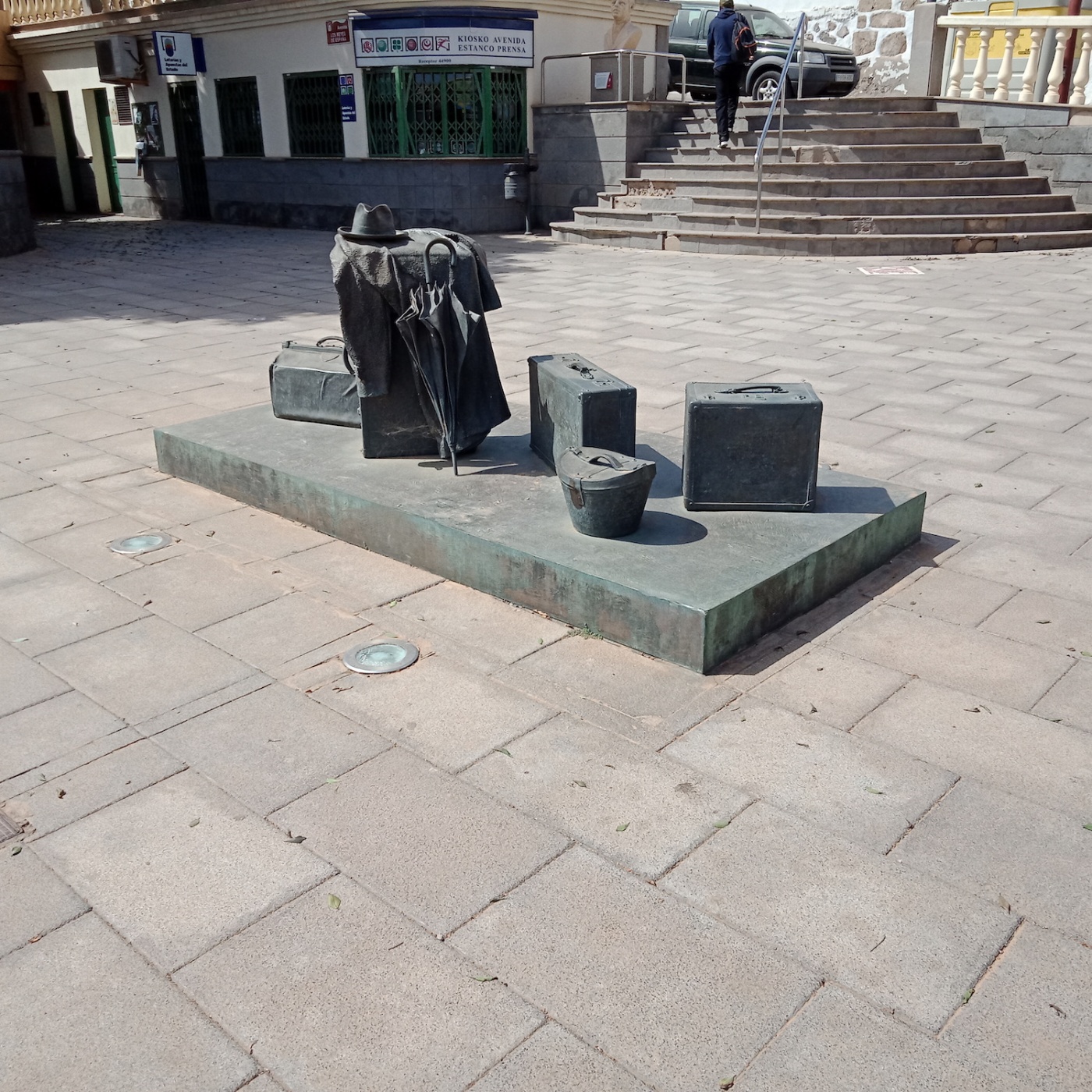
Heading Back up Calle León y Castillo
I think I had my British guise on when I set off for my walk, as I wore no hat and had chosen the wrong time of day and it got too hot on the promenade. I hunted for a seat in some shade but there were none. So I headed back up the hill. Olivia Stone writes of how steep the roads up from the port are. Here you can see they are similar to San Francisco in places.
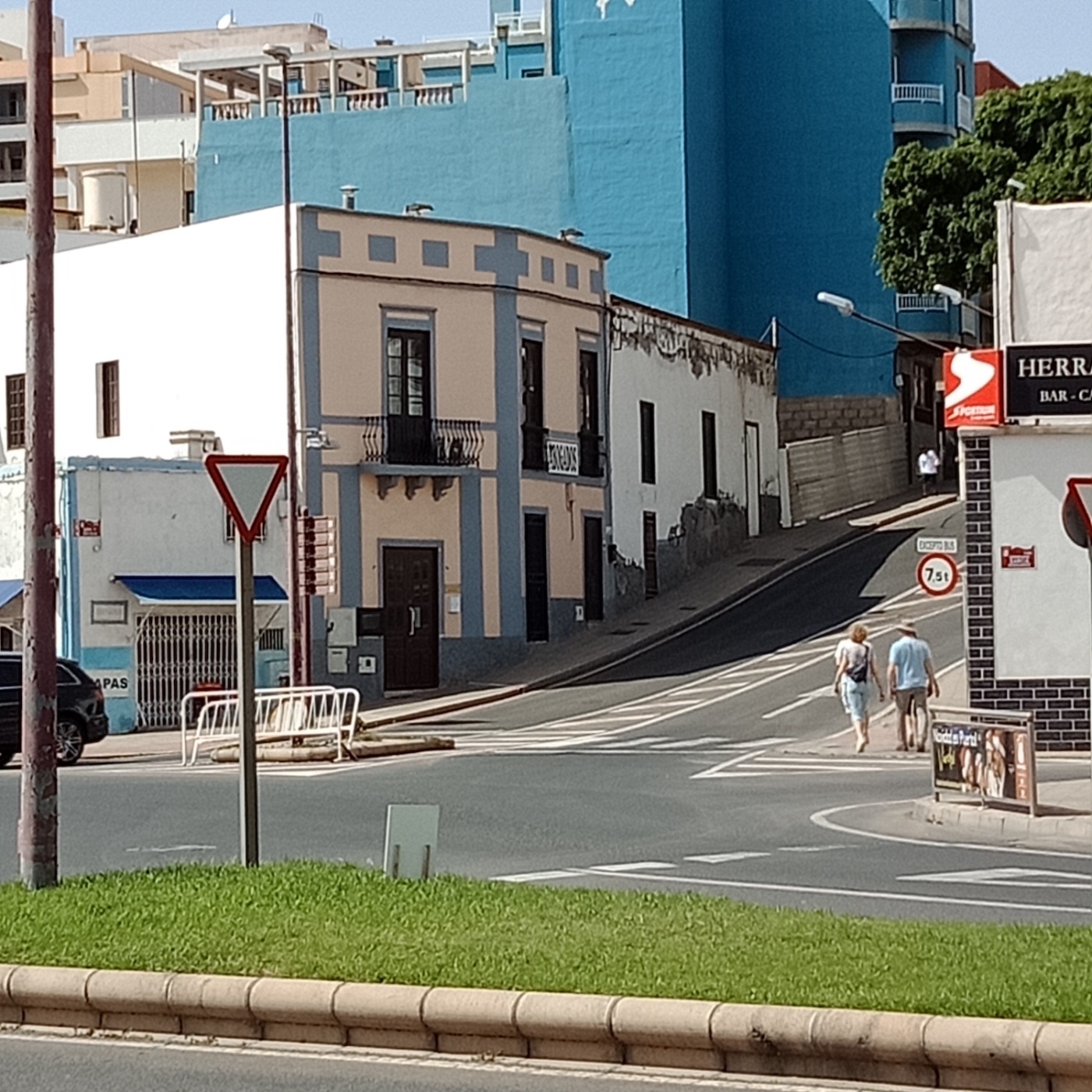
I stopped to catch my breath in the shade a couple of times, and to photograph more of the charming old buildings.


Soon I was back at the church, Our Lady of the Rosary, which dominates the main square. Conceived in 1812 and built in 1824 and then continuing in 1835, today it is considered an historical monument.
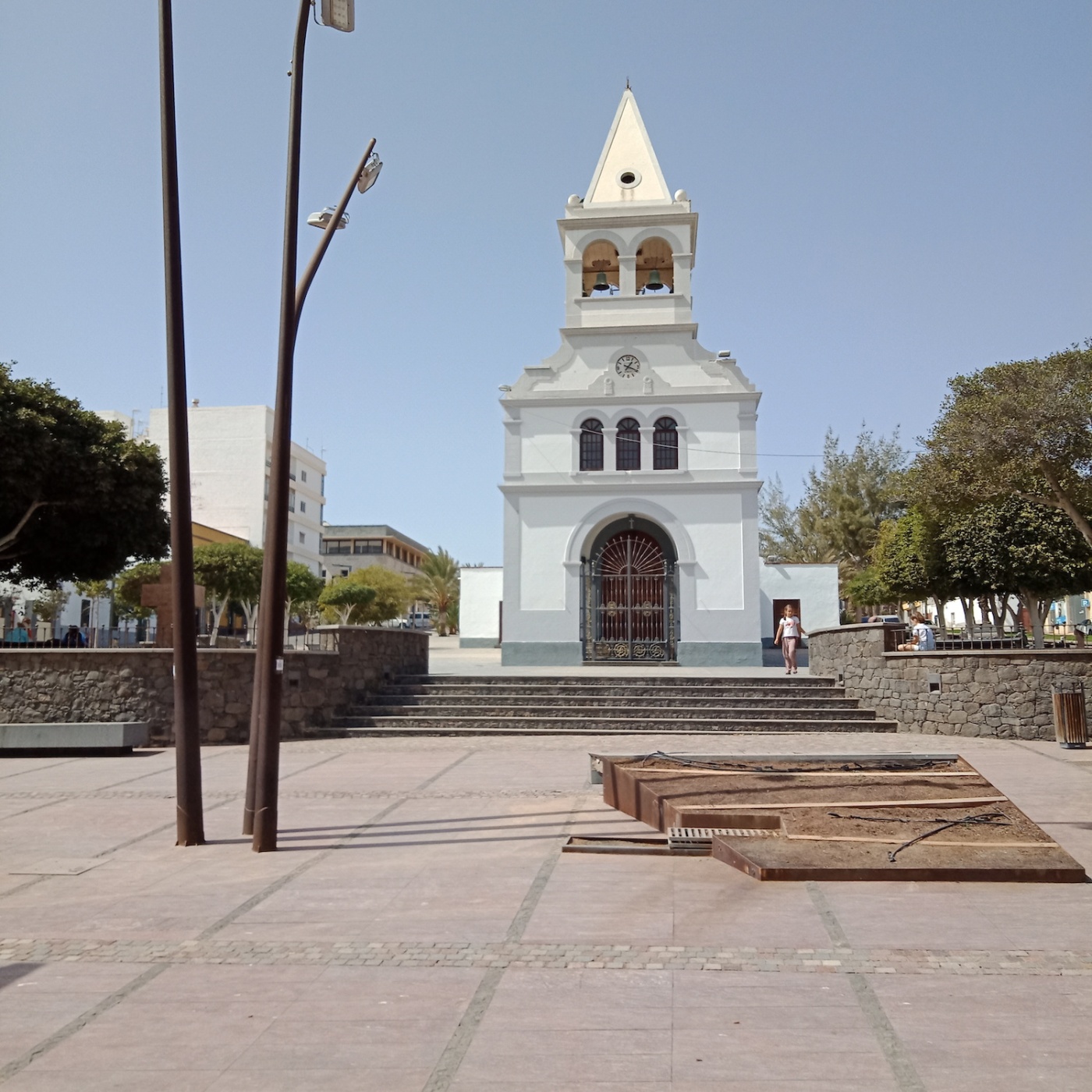
Walking up beside the church I found this chap, Suso Machín, an artist and writer who wrote extensively of his time in then Puerto Cabras in the 1930s.
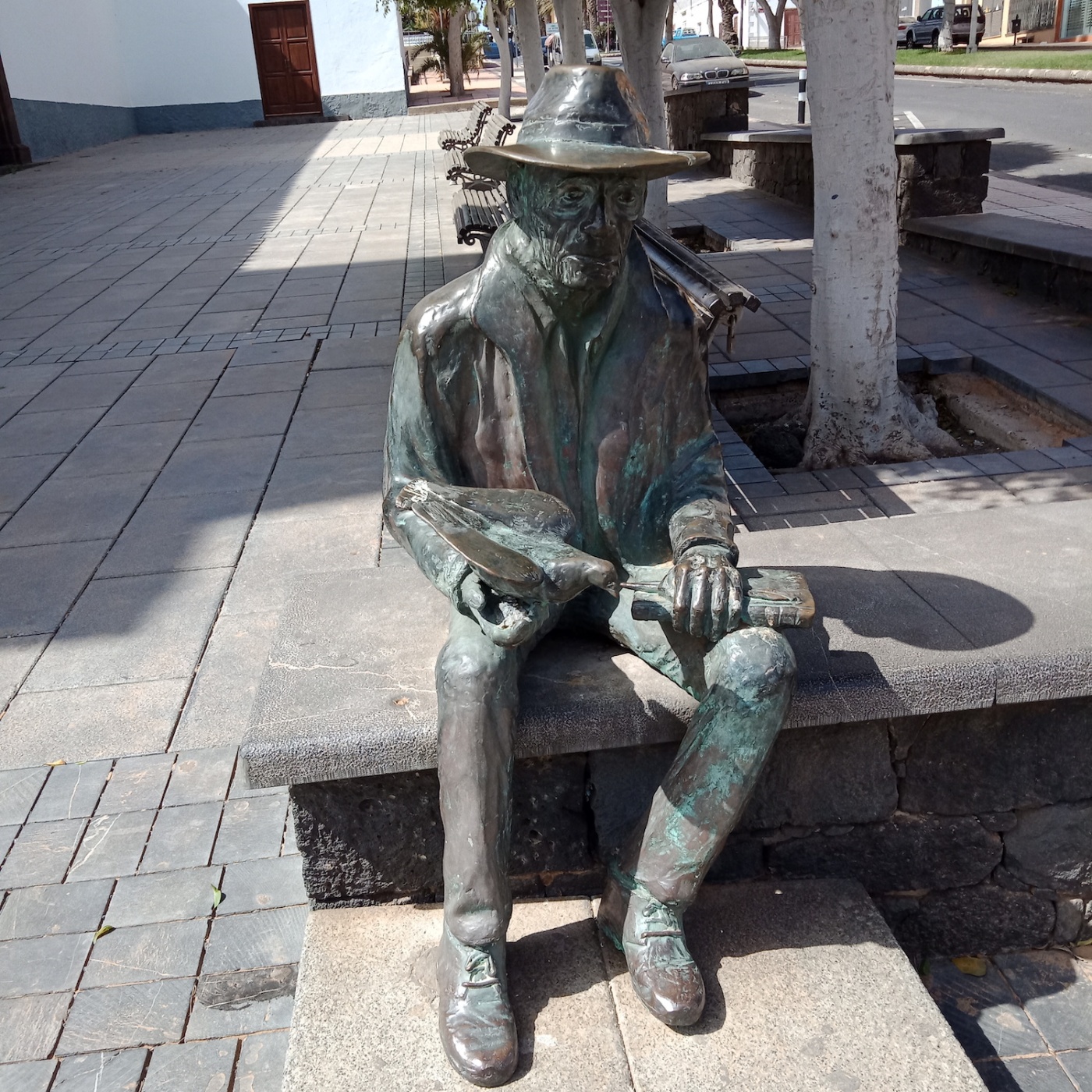
Walking around Puerto del Rosario, I have gained a tremendously rich impression of what is important to Fuerteventura, to the majoreros and their cultural identity. They live quietly and modestly behind the scenes, letting all this street sculpture – there are over a 100 works around the tiny city – tell their story for them.
Join my Facebook group to keep up to date with my Canary Islands writing
You can read my other blog posts of my February 2020 Fuerteventura holiday here https://isobelblackthorn.com/fuerteventura-travel-diary/

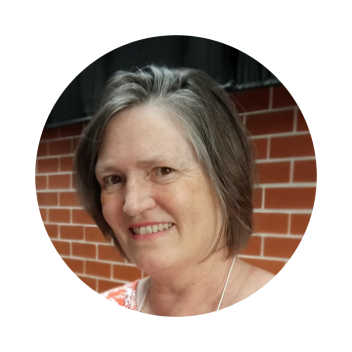 Isobel Blackthorn is an award-winning author of unique and engaging fiction. She writes gripping mysteries, dark psychological thrillers and historical fiction. She is the author of two novels set in Fuerteventura: Clarissa’s Warning and A Prison in the Sun.
Isobel Blackthorn is an award-winning author of unique and engaging fiction. She writes gripping mysteries, dark psychological thrillers and historical fiction. She is the author of two novels set in Fuerteventura: Clarissa’s Warning and A Prison in the Sun.







